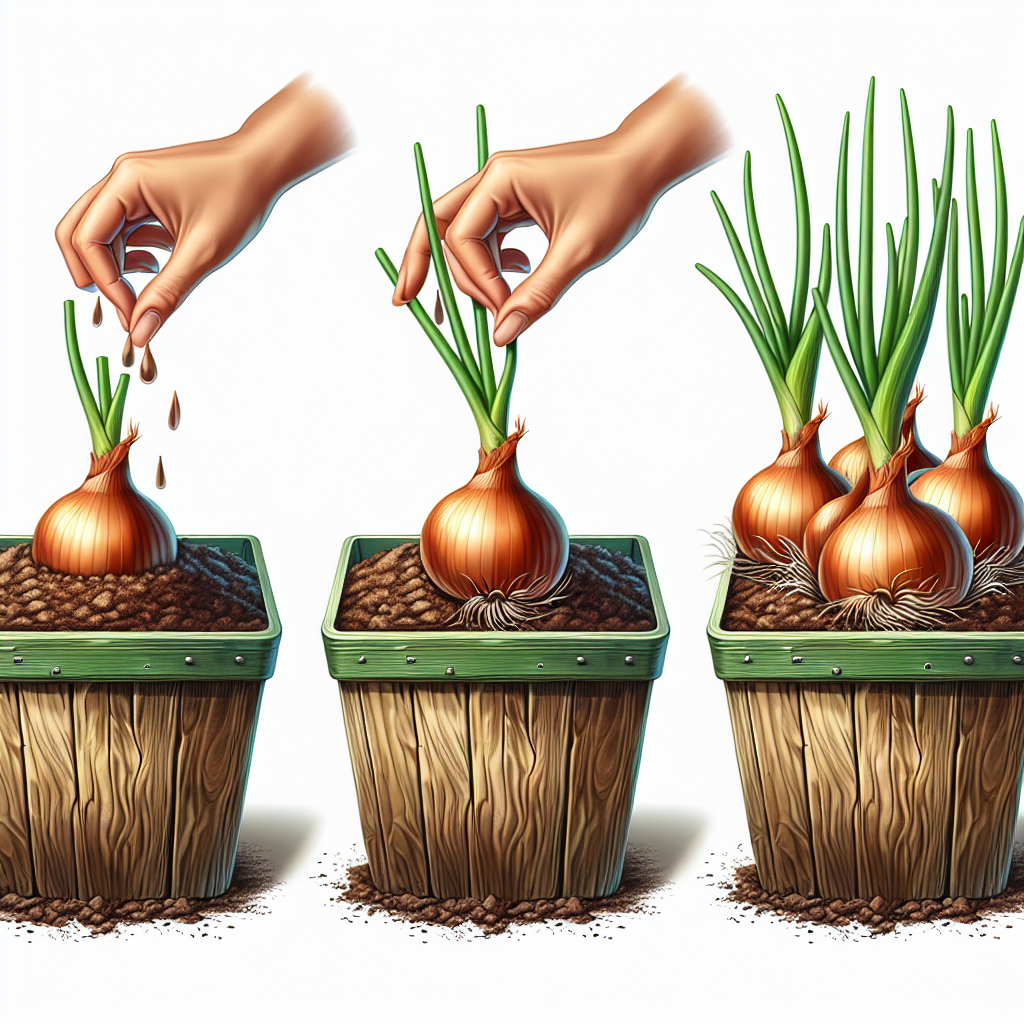Onions are a common staple in many kitchens around the world, adding flavor and depth to a wide variety of dishes. While they can be easily grown in traditional garden beds, they are also well-suited for container gardening. In this article, we will explore the process of planting, caring for, and harvesting onions in containers.
Choosing the Right Container
When selecting a container for growing onions, it’s important to choose one that is at least 6 inches deep and has adequate drainage holes. Onions have shallow root systems, so they don’t need a lot of space to grow. A good rule of thumb is to plant one onion per 4-inch container or four onions per 10-inch container.
Fill the container with a well-draining potting mix that is rich in organic matter. This will provide the onions with the nutrients they need to grow healthy and strong.
Planting Onions
Onions can be grown from seed, sets (small bulbs), or transplants. If planting from seed, start them indoors 8-10 weeks before your last frost date. Sow the seeds about ¼ inch deep in trays or small pots filled with potting mix. Keep the soil consistently moist until the seeds germinate.
If using sets or transplants, simply plant them directly into your containers at the appropriate depth – about 1 inch deep for sets and just below the soil surface for transplants. Space them about 4 inches apart to allow room for growth.
Caring for Onions
Onions require regular watering and full sun to thrive. Water them deeply once a week, allowing the soil to dry out slightly between waterings. Be careful not to overwater as this can cause the bulbs to rot.
Fertilize your onions every two weeks with a balanced fertilizer high in nitrogen to promote leafy growth. Stop fertilizing when you start to see bulbs forming.
Onions are relatively low-maintenance plants but may require some additional care throughout their growing season:
– Remove any weeds that compete with onions for nutrients
– Mulch around the base of the plants to retain moisture and suppress weeds
– Thin out overcrowded seedlings by gently pulling out excess plants
– Watch out for pests such as thrips and onion maggots – use natural remedies like neem oil or insecticidal soap if needed
Harvesting Onions
Onions are ready for harvest when their tops begin to yellow and fall over. This usually occurs in late summer or early fall depending on when they were planted.
To harvest onions, gently loosen the soil around each bulb with a trowel or hand fork. Carefully lift them from the ground and lay them out in a sunny spot to dry for a few days. Once they are fully dried, remove any remaining soil from the bulbs and store them in a cool, dry place.
If you plan on storing your onions long-term (several months), braid their tops together and hang them in a cool, dark place like a basement or garage.
Enjoying Your Homegrown Onions
Freshly harvested onions have an intense flavor that can’t be beaten by store-bought varieties! Use them in soups, stews, salads, stir-fries – just about any dish that could benefit from their distinctive taste.
For those who enjoy cooking with onions year-round, consider planting multiple batches throughout the growing season so you always have fresh ones on hand.
In conclusion, growing onions in containers is a rewarding experience that doesn’t require much space or expertise. With proper care and attention to detail, you can enjoy homegrown onions from planting to harvest!














